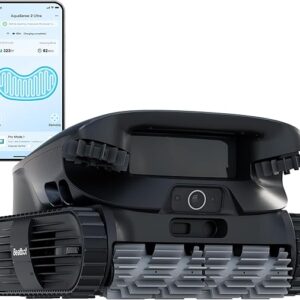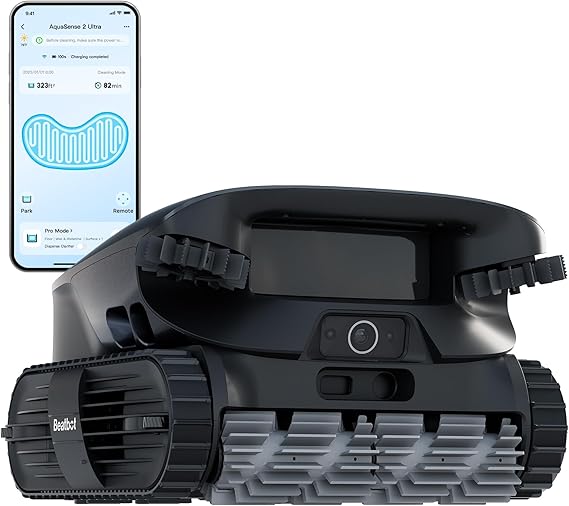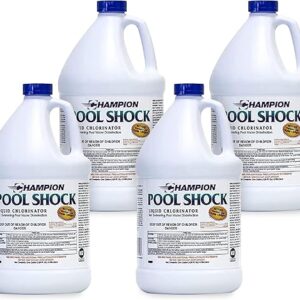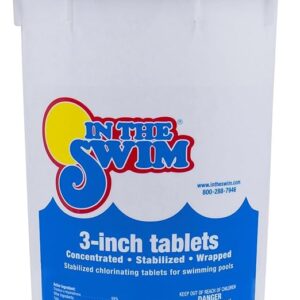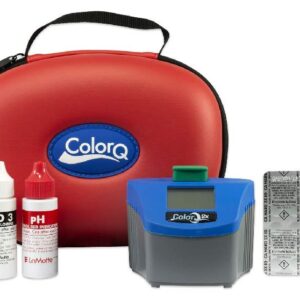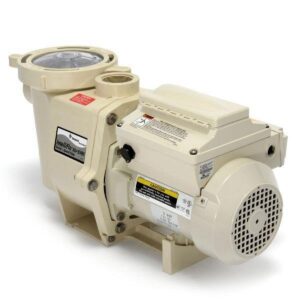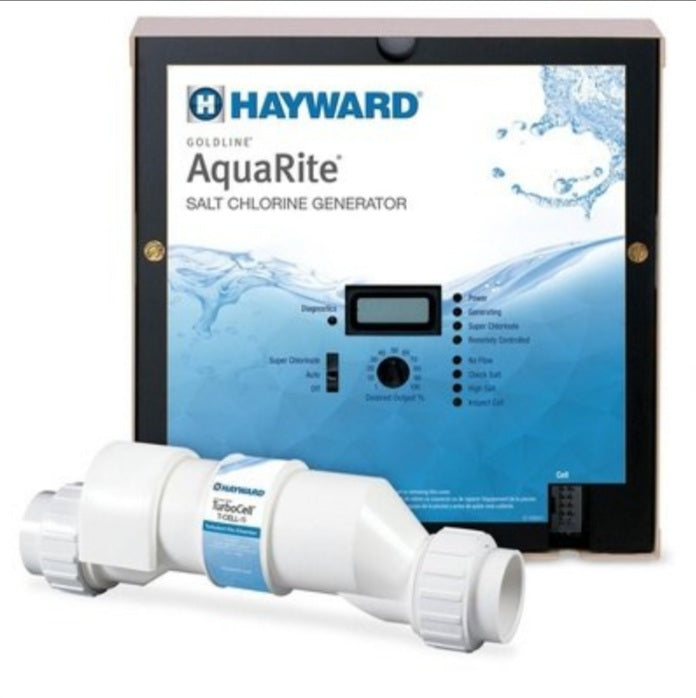The Ultimate Guide to Hot Tub and Spa Maintenance
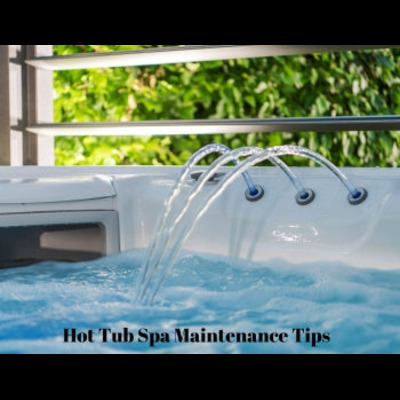
A hot tub or spa is a fantastic way to enjoy warm, relaxing water, especially during the colder months when an outdoor pool without a water heater might be unusable.
For clarity, we will interchangeably use hot tub and spa, as they all have similar maintenance routines. Hot tubs or Jacuzzis are portable and inflatable, while spas are fixed.
A spa water heating system becomes essential during fall and winter, offering a warm soak despite chilly temperatures. However, proper maintenance is vital to ensure your hot tub remains clean, efficient, and comfortable.
While most hot tub chemicals are the same as those used to maintain swimming pools, the maintenance routine and how a hot tub works differ from those of a pool.
This article will cover how to clean hot tubs and filters, hot tub chemicals, monitoring and maintaining chemical levels, starter chemical kits for chlorine and bromine-maintained spa or hot tubs, water circulation, hardware maintenance, and safety measures. We have included all the hot tub maintenance supplies you need to have a wonderful soak throughout the cold seasons.
A. How to Clean a Hot Tub
You must take a few daily, weekly, quarterly, and annual hot tub maintenance measures to ensure it is always clean and usable throughout the cold seasons, indoors or outdoors.
Outdoor hot tubs and spas are prone to getting dirty from leaves or windblown trash. Like a swimming pool, they can be cleaned using a leaf net or hand skimmer.
1. Cleaning Spa Jets and Shell
A Spa comes with Spa Jets and a Shell for water circulation. Spa jets accumulate lots of gunk when not cleaned frequently. Make it a weekly routine to clean the Spa jets and jet line using a special spa jet cleaner.
To clean and prevent mildew in your hot tub, use mild chlorine bleach or sodium hypochlorite, such as Pool Essentials Chlorinating Liquid, to clean the inside and shell of your hot tub. Wipe it down thoroughly to maintain a cleaner hot tub and proper sanitation to keep mildew at bay all the time.
2. Cleaning Scum-line, Scale, Grim, and Tough Stains
Hot Tub waterline edges also tend to form grim, scale, dirt, and scum-line when not cleaned regularly; use hot tub spa surface cleaner to clean your hot tub.
For less strong stains, you can also use a soft sponge with cleaning white vinegar to scrub off the surface of your hot tub or spa after every use.
To prevent these dirt from appearing in your hot tub or spa, add a natural enzyme spa and hot tub water clarifier in your hot tub spa water. A natural enzyme also clears scum-line and other dirt.
Depending on usage, the hot tub spa waterline can be scheduled for a daily/weekly cleaning routine, which also helps keep the water clean.
For tough or metal stains in spa or hot tub surfaces, vinyl, fiberglass, and metal surfaces, use spa stain and scale control for hot tubSpa and Hot Tub Scale and Stain Control to remove and prevent stains.
3. Maintaining a Clean Water
Depending on the sanitizer you use; chlorine or bromine, take the reading frequently and adjust as appropriate to keep your water clean.
When sanitizer levels are ok but your water appears cloudy, you can use hot tub water clarifiers to make water more transparent to make water more transparent, especially after soaks. Below, you’ll find more about chlorine, bromine, non-chlorine oxidizers, and other hot tub chemicals.
Moreover, since hot water in your tub will extract oil, lotion, soap, or makeup from users, oily stuff and foam will float on top of your water, clogging your filters if you don’t take action after every bath.
You can use scum balls for hot tubs to remove oil or gunk from your Spa water. Fluffy tennis balls can also do the trick. Put a few scum balls or fluffy tennis balls in the skimmer and drop a few more balls in your hot tub to float on water and collect all the dirt left after a bath.
Alternatively, you can also use a Spa and Hot Defoamer if your hot tub has a lot of foam.
Hot Tub and Spa Defoamer
Also, to maintain clean water and avoid dirtying it quickly, clean the waterline and seats very often.
B. How to Clean Hot Tub Filters
Just like the Kidneys are essential in cleaning human blood, hot tub filters are equally important in cleaning water, and you must take good care of your filters.
Draining Your Hot Tub
Make it a routine to drain your hot tub or spa every three to four months to clean the filters thoroughly. To quickly drain a hot tub, connect a garden hose to your hot tub’s drainage spigot or valve, with the other end connected to the sewer drain, and open the valve to drain the tub independently.
Alternatively, you can drain your hot tub using a submersible pump, which easily connects to your tub’s drainage hose. Please turn off the tub, connect the pump to the drainage hose, and direct it to the drain. Position the pump at the deepest end of your hot tub and put it on.
After draining and cleaning your hot tub, be very careful when re-filling to avoid unnecessary overflow; the best way to prevent water overflow is to set a timer.
To clean your hot tub filters and increase the efficiency and lifespan of your filters, perform the following at least once in 3-4 months:
1. Rinse Hot Tub Filters Using Warm to Hot Water
The first step is rinsing the filters using warm to hot water to remove oily stuff if you have not been using the scum ball trick. Rinse the filters with an outdoor garden hose. The more you use the hot tub, the more often it would be best to rinse the filters.
2. Soak Hot Tub Filters
Soaking hot tub filters is necessary every time you drain and re-fill water. To soak the filters, use a powerful hot tub and spa filter soak cleaner that will loosen oil buildups and firm dirt. For good results, soak the filters overnight, rinse them off using a hose when you are done, and dry them up.
Alternatively, if soaking the filters overnight is too long for you, spraying the filters with a special bottle spray is more effective. However, you may need a lot of filter soak cleaner than when you soak the filter.
Let the soak sit in the filters for a while after spraying, and then rinse off the filters. After cleaning, filters should be dried. Filter spraying is essential for the monthly cleaning of hot tub filters when dirt is not so heavy on the filters.
When to Replace Hot Tub Filters
However, when the filters are worn out, they won’t be able to clean your hot tub even if you soak in the cleaning chemicals.
It is recommended that hot tub filters be replaced at least every year. If your filters have been in use for over a year, you might need to buy new hot tub replacement cartridge filters and replace the old ones.
Remember to flush the spa lines after every hot tub draining. However, this can be done annually alongside major repairs done by a technician, such as fixing broken hardware, electrical wires, the hot tub cover, and more.
C. Hot Tub Chemicals and Chemical Levels
Before adding chemicals to your hot tub for the first time, you must conduct a complete water analysis by testing the water to determine its chemical levels, especially pH, Alkalinity, Chlorine or Bromine sanitizers, and Stabilizer (Cya).
To measure accurate chemical levels in your Spa, you can use the Pool and Spa 9-Way Test Strip, which is very pocket-friendly and easy to use.
You can also use any reliable pool water test kit, like LaMotte ColorQ Pro 7 or Taylor Technologies digital test kit, to measure and establish the exact chemical levels in your hot tub before adding any chemical.
Remember to often test your hot tub’s chemical levels. This is a crucial spa maintenance procedure to help keep your water clean and healthy and avoid skin problems like hot tub rush.
1. Sanitizer: Chlorine or Bromine?
Chlorine and Bromine are among the most essential chemicals in a hot tub or spa when it comes to sanitizing water. But which one is better for your needs?
Chlorine works quickly to kill bacteria and algae but, is more volatile at higher temperatures, and requires precise pH balance to remain effective. The best chlorine for Spa or hot tub is available as chlorine granules. A stabilized chlorine sanitizer like chlorine granules is ideal for outdoor spas and hot tubs.
On the other hand, Bromine is particularly effective and widely used because it works well at higher temperatures, is less affected by pH fluctuations, and provides longer-lasting sanitization compared to chlorine. Bromine typically comes in the form of bromine tablets.
UseChlorine-Free ShockChlorin-Free ShockChlorine-Free Shockto boost chlorine and bromine levels in your spa to be effective in sanitizing water. Chlorine granules can also be used to re-activate bromine levels.
The ideal free chlorine (FC) level for a hot tub is 3 ppm. The perfect level for bromine in a hot tub or spa is 4 ppm, but it can go up to 5 ppm.
Buy Chlorine Spa and Hot Tub Starter Kit; all chemicals included.
Buy Bromine Spa and Hot Tub Starter Kit; all chemicals included.
Related Article: Chlorine vs Bromine: Which is the Best Sanitizer for Spa and Hot Tub? Find out which reasonates with your specific needs!
Which Chlorine Type is Best for Spa and Hot Tub?
Chlorine granules, or dichlor, are stabilized chlorine commonly recommended for shocking hot tubs due to their quick-dissolving nature and ease of use. They also last longer because they contain Cyanuric acid, making them ideal for outdoor spas to protect chlorine from UV light.
While liquid chlorine is a strong and fast-acting sanitizer (10%-12.5% available chlorine), it is not typically the best choice for hot tubs or spas. It is concentrated and might damage hot tub parts if the measurement is incorrect.
Because of this challenge, liquid chlorine is more commonly used in larger pools, not hot tubs. You also need to monitor chemical levels closely since it causes pH fluctuations and does not contain Cyanuric acid, which makes it vulnerable to UV light.
However, suppose you are comfortable monitoring chemical levels and prefer liquid chlorine; in that case, it is advisable to use stabilized chlorine (dichlor) that comes with Cyanuric acid for the first few days before starting to use liquid chlorine when Cya level hits 30 ppm.
A new or refilled hot tub requires a higher Free Chlorine range of up to 6 ppm, which requires more potent and stable chlorine, such as dichlor.
On the other hand, Trichlor or tablet chlorine slowly dissolves and comes with loads of stabilizer (Cya). It is also acidic and tends to lower pH faster, dangerous to hot tub components.
Combined chlorine or chloramine in a hot tub or spa should not exceed 0.5 ppm, or your water will appear cloudy and dirty.
Use this Chlorine/Cya chart by TFP to determine the exact levels to maintain your FC and Cyanuric acid.
2. pH Level
Like in pools, hot tubs or spas need a pH between 7.2 and 7.8. Use pH Plus to raise pH level in your hot tub when it falls below the recommended range, and use pH Minus or Muriatic acid to lower pH when it goes above 7.8, pH tends to increase a lot in a hot tub, spa, or pool due to aeration.
Muriatic acid also lowers Total Alkalinity when added to a hot tub, spa, and swimming pool. Make sure you monitor and adjust TA after using Muriatic acid.
A pH below 7.2 is very acidic and will eat away at hot tub or spa parts, causing damage. On the other hand, a pH above 7.8 is destructive since it will cause scaling to hot tub/spa equipment, especially the heater or heat exchangers, causing damage that might need replacement.
3. Total Alkalinity(TA) Level
Alkalinity is one of the most important chemicals to watch in a swimming pool, hot tub, or spa. If TA goes out of range, it will affect the pH since it acts as a pH buffer. High alkalinity will escalate pH levels quickly, and you don’t want that.
To raise alkalinity in your hot tub or spa, add an Alkalinity Increaser, and to lower it, add the correct amount of Muriatic acid. The recommended levels for TA is between 80 and 140 ppm.
4. Calcium Hardness(CH) Level
Foaming is one of the most common problems in a hot tub or spa. To avoid foaming, we use Calcium in pools and hot tubs. So, if you have been noticing foam in your hot tub, spa, or swimming pool, check your CH level and balance it as appropriate.
Keep the Calcium Hardness level in your hot tub between 200 and 400 ppm. Remember, a hot tub or spa, like a swimming pool, has some ceramic material, and low calcium may damage these parts made of ceramic or cement. On the other hand, a high CH level may lead to calcium scaling in your hot tub.
Use Calcium Hardness Increaser to raise CH level when lower than 200 ppm, however, you need to be very careful not to add excess calcium since the only way to lower Calcium Hardness in a hot tub, spa, or pool is to drain and re-fill your water.
Chlorine Starter Kit for Chlorine-Maintained Spas and Hot Tubs

Bromine Starter Kit for Bromine-Miantained Spas and Hot Tubs

D. Hot Tub/Spa Water Circulation System
Water circulation is one of the most critical processes in keeping the pool, hot tub, or spa water clean and fresh. Water is forced to pass via filter cartridges that remove dirt and small particles, making the water cloudy.
In most cases, a hot tub or spa has an auto-circulation system. You can schedule water circulation once or twice for 15-20 minutes, filtering all the debris from your hot tub. Remember, the more you circulate the water, the cleaner and fresher your spa/hot tub water will be.
A heavily used spa or hot tub can be circulated twice daily for cleaner water. If your hot tub or spa auto-schedule system and you can’t schedule circulation, manually circulate and refresh the water for 15-20 minutes daily.
E. Hot Tub Hardware Maintenance
In addition to chemical balance and cleaning, it’s crucial to maintain the hardware components of your hot tub, including the heating system and pump.
1. Heating System Maintenance
The heating element ensures your hot tub water remains at the perfect temperature, especially during colder months. Over time, calcium buildup can occur within the heater, reducing its efficiency and possibly leading to failure.
Regular maintenance, such as descaling the heating element, will prevent this. If you notice erratic heating or the water not reaching the desired temperature, it may indicate scaling or a faulty heating element.
You can descale the heating system by draining the tub and using a vinegar solution (1 part white vinegar to 1 part water) to clean the heating element. Let the solution sit on the component for a few minutes, then gently scrub with a soft brush to remove calcium deposits.
Maintaining proper pH and calcium hardness levels (100-150 ppm) will also help prevent scale buildup in your heating system.
2. Pump and Motor Maintenance
The water pump circulates water through the filters and jets. To maintain efficiency, periodically check for leaks or strange noises, which can be signs of wear.
The pump motor may need lubrication, especially if it makes grinding or squeaking noises. Silicone-based lubricants can keep the moving parts smooth and efficient.
Rinse or replace filters regularly to prevent clogging, which can overwork the pump and cause damage. Cleaning the filter periodically helps the pump operate more efficiently.
3. Hot Tub Cover Maintenance
A properly maintained hot tub coveCustom Hot Tub Covers helps insulate the water and keep debris out. Check the cover for tears or damage that could allow heat to escape, making the heating system work harder.
Clean the cover regularly with a mild soap and water to extend its life. Apply a UV protectant spray designed for hot tub covers every 3-4 months. This helps prevent cracking and fading caused by sun exposure, particularly for outdoor spas.
Inspect the cover’s seams and material for rips or tears. Small holes can be patched with vinyl repair kits, available at most hardware or pool stores, to avoid replacing the entire cover.
4. Addressing Spa and Hot Tub Leaks
Spa and hot tub leaks can be a frustrating issue, leading to water wastage, unbalanced chemical levels, and potential damage to your equipment.
Leaks often occur in plumbing connections, jets, or the shell itself due to wear and tear or improper installation. Identifying leaks early is crucial to maintaining the longevity of your spa or hot tub.
Can’t find the leak? Using a reliable hot tub leak sealer, you can find and fix minor leaks without the need for costly repairs or draining your water. Leak sealers are designed to work quickly, sealing cracks and gaps in plumbing or small shell fractures.
Incorporating a leak sealer as part of your regular maintenance routine not only prevents further water loss but also ensures your spa stays in top condition for relaxation and enjoyment.
5. Annual Service and Inspection
Even with regular maintenance, it’s recommended to have a professional technician inspect the spa at least once a year. This includes checking the electrical system, control panel, and jets, ensuring all parts are functioning correctly and safely.
While professional inspections are recommended, here is a DIY thorough check on essential hot tub components:
- Jets: Check for blockages in the jets by running water through them or using a small brush to clean out debris.
- Control Panel: Inspect the control panel for error messages or issues. Resetting the system by switching off the breaker for 10-15 minutes can often resolve minor glitches.
- Electrical Connections: If you feel comfortable working with basic electrical components, check the spa’s electrical box for loose wires or corroded connections. Ensure the power is off before doing this.
F. Hot Tub and Spa Safety Tips
- Always ensure a licensed electrician installs the hot tub.
- Regularly inspect the Ground Fault Circuit Interrupter (GFCI) to ensure it functions correctly.
- Avoid using electrical appliances or devices near the hot tub.
- Conduct regular maintenance to check for corrosion or damage in the hot tub’s electrical components.
- Ensure proper grounding and bonding of all electrical systems connected to the hot tub.
Following safety standards and regularly maintaining your hot tub can significantly reduce the risks and electrical hazards.
G. How Hot Should a Hot Tub Be?
The recommended water temperature for a hot tub or spa is typically between 100°F and 104°F (37.8°C to 40°C). However, the exact temperature can vary depending on personal comfort and safety considerations:
General Guidelines:
- Most common setting: 100°F to 102°F (37.8°C to 38.9°C) is the most popular range for many hot tub users, providing a relaxing, therapeutic experience.
- Maximum safe temperature: The maximum temperature recommended by the U.S. Consumer Product Safety Commission (CPSC) is 104°F (40°C). Temperatures above this level can pose health risks, such as overheating, dehydration, and increased heart rate.
Special Considerations:
- Children: For children, it’s advisable to keep the temperature lower, around 95°F (35°C) or lower, and limit their time in the hot tub to no more than 10–15 minutes at a time.
- Pregnant Women: Pregnant women should consult their doctors, but in general, it’s recommended to keep the hot tub temperature at or below 100°F (37.8°C) to avoid overheating, which can be harmful during pregnancy.
- Health Conditions: People with certain health conditions, like heart disease or high blood pressure, should consult a doctor before using a hot tub, and they may need to keep the temperature on the lower side.
For Therapeutic Use:
- Lower temperatures: Some people prefer temperatures in the range of 95°F to 98°F (35°C to 36.7°C) for a more mild and prolonged soak, especially for muscle relaxation without the intense heat.
Always ensure the water temperature is well-regulated, and check the hot tub’s thermometer regularly to avoid risks.
H. How to Winterize a Hot Tub
Winterizing a hot tub or spa is essential if you don’t plan to use it during the colder months. Proper winterization prevents freezing, which can cause significant damage to your spa’s pipes, pump, and heating system. Below is a step-by-step guide to winterizing your hot tub or spa:
1. Turn Off the Power
Before you begin, ensure the hot tub is entirely powered off by switching off the breaker or disconnecting the power supply. This is critical for safety and to prevent the equipment from running while draining and cleaning.
2. Drain the Water
You need to drain all the water from your hot tub to prevent it from freezing and causing damage.
- Use the drain plug or submersible pump to remove the water. The pump is faster, while the drain plug is standard on most models.
- Open the air blower (if equipped) to blow out any remaining water in the plumbing lines. You can run the blower for 30 seconds to clear water out of the system.
3. Remove and Clean the Filters
After draining the tub, take out the filters.
- Clean them using a filter cleaning solution and rinse thoroughly.
- If the filters are worn out, this is an excellent time to replace them.
- Store the filters in a dry, clean place during winter.
4. Drain Water from the Pipes
Water in the pipes and jets can freeze, causing severe damage. To remove water from these areas:
- Blow out the lines: You can use a wet/dry shop vac or an air compressor to blow out the remaining water from the pipes. Attach the vacuum or compressor to the jets and suction/blow out water from each jet, the drain, and the filter compartment.
- Remove drain plugs in the pump and heater to ensure all water has drained from the internal components.
5. Clean the Hot Tub Shell
After the water is drained and the pipes are blown out, thoroughly clean the hot tub shell.
- Wipe the surface with a hot tub cleaner or mild soap and water. This helps remove dirt, oils, or debris that may have built up over time.
- Pay special attention to cleaning the waterline, seats, and corners to prevent mold or mildew from growing while the spa is not in use.
6. Remove Excess Water from the Bottom
Even after draining, some small amounts of water may still be left in the bottom of the tub. Use towels, a wet/dry vacuum, or a sponge to remove all remaining water. Make sure the entire tub is as dry as possible.
7. Loosen Unions and Connections
To ensure no water remains in the plumbing, loosen the unions around the pump and heater to allow any trapped water to drain. Tighten them back once all water is removed.
8. Add Non-Toxic Antifreeze
If you live in a freezing climate, adding non-toxic RV antifreeze to the plumbing can provide extra protection.
- Pour the antifreeze into the jets, filter compartment, and pipes to prevent residual water from freezing.
- Be sure to use only non-toxic antifreeze designed for recreational vehicles and hot tubs.
9. Cover the Hot Tub
Once your hot tub is fully drained, dried, and winterized, cover it with a durable, insulated hot tub cover.
- Ensure that the cover fits snugly and tightly to prevent any debris, snow, or rain from getting inside.
- You can also place a protective tarp over the cover for extra protection against snow and ice.
10. Check on the Hot Tub Periodically
Even after winterizing, it’s a good idea to check on your hot tub periodically during the winter months to ensure the cover is secure and no moisture has accumulated inside.
Additional Tips:
- Keep the cover clean: Remove snow and ice from the cover to prevent damage from heavyweight.
- Shut off water supply: If your hot tub is connected to a water source, turn it off to prevent accidental filling during the winter.
- Seal air leaks: Ensure the cabinet around the hot tub is sealed to prevent cold air from entering and causing condensation.
Following these steps will protect your hot tub or spa from damage during winter, ensuring it’s in good condition when you’re ready to use it again in the spring.

